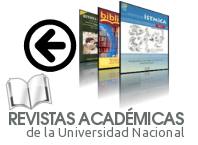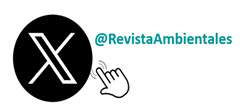Bosques tropicales estacionalmente secos son importantes para ganaderos en el noroeste costarricense
DOI:
https://doi.org/10.15359/rca.54-2.2Palabras clave:
Adaptación basada en ecosistemas; bosque seco tropical; corredor seco mesoamericano; ganadería; ramoneo.Resumen
[Introducción]: En las regiones secas de Centroamérica, los ganaderos llevan su hato a los bosques de sus fincas durante la temporada seca, pero se sabe poco sobre esta práctica. [Objetivo]: Determinar la frecuencia de esta práctica, y cómo se ajusta al manejo de fincas. [Metodología]: Se administraron 43 entrevistas semiestructuradas a ganaderos del cantón de Liberia, Guanacaste, Costa Rica. [Resultados]: Los ganaderos padecían de la pérdida de rentabilidad de la ganadería debido a sequias, incendios y robo de ganado. El ramoneo en bosques se usaba en el 70 % de las fincas, mayormente entre marzo y mayo. No se pudo asociar esta práctica con un tipo específico de finca o estrategias de alimentación. La alta variabilidad en manejo de finca impidió explicar las diferencias en prácticas de alimentación. Se encontraron diferencias en la estructura y tipos de alimentación entre fincas de bajura y en las pendientes de montañas. La decisión de usar el bosque para ramoneo parecía basarse en un trade-off entre bienestar animal y facilidad de manejo. El conocimiento de los finqueros sobre el comportamiento del ganado en bosques era variable y limitado a los márgenes del bosque y pasturas. [Conclusiones]: Se destaca que los bosques se deben considerar cuando se estudia la ganadería en regiones secas de Centroamérica. Recomendamos estudios de seguimiento sobre estrategias de alimentación y sobre el impacto del ganado sobre la integridad ecológica de los bosques secos, para determinar si los decisores de política deben fomentar este tipo de alternativas de bajo costo.
Referencias
Aganga, A. A., & Tshwenyane, S. O. (2003). Feeding Values and Anti -Nutritive Factors of Forage Tree Legumes. Pakistan Journal of Nutrition, 2(3), 170–177. https://doi.org/10.3923/pjn.2003.170.177
Andrade Pérez, Á., Herrera Fernández, B., & Cazzolla Gatti, R. (2010). Building Resilience to Climate Change: Ecosystem-based adaptation and lessons from the field. Ecosystem Management Series no. 9. Gland, Switzerland: IUCN.
Ascencio-Rojas, L., Valles-de la Mora, B., & Ibrahim, M. (2013). Use and management of tree fodder resources on farms in central Veracruz, Mexico. Avances En Investigación Agropecuaria, 17(1), 95–117.
Barrientos-Ramírez, L., Vargas-Radillo, J. J., Segura-Nieto, M., Manríquez-González, R., & López-Dellamary Toral, F. A. (2015). Nutritional evaluation of mature seeds of Enterolobium cyclocarpum (parota) from diverse ecological zones in western Mexico. Bosque (Valdivia), 36(1), 95–103. https://doi.org/10.4067/S0717-92002015000100010
Belsky, A. J., & Blumenthal, D. M. (1997). Effects of Livestock Grazing on Stand Dynamics and Soils in Upland Forests of the Interior West. Conservation Biology, 11(2), 315–327. https://doi.org/10.1046/j.1523-1739.1997.95405.x
Bergoeing, J. P. (2017). Geomorphology and volcanology of Costa Rica. San Jose, Costa Rica: Elsevier. https://www.sciencedirect.com/book/9780128120675/geomorphology-and-volcanology-of-costa-rica
Betancourt, K., Ibrahim, M., Harvey, C. A., & Vargas, B. (2003). Efecto de la cobertura arbórea sobre el comportamiento animal en fincas ganaderas de doble propósito en Matiguás , Matagalpa, Nicaragua. Agroforestería En Las Américas, 10, 47–51. http://bco.catie.ac.cr/portal-revistas/index.php/RAFA/article/viewFile/858/1343
Cabrera, R. P. (2007). Tierra y Ganaderia en Guanacaste (1st ed.). Cartago, Costa Rica: Editorial Tecnológica de Costa Rica.
Di Rienzo, J. A., Casanoves, F., Balzarini, M. G., Gonzalez, L., Tablada, M., & Robledo, C. W. (2018). InfoStat versión 2018. Argentina: Facultad de Ciencias Agropecuarias, Universidad Nacional de Córdoba. http://www.infostat.com.ar
Elshahawy, I., & Aly, M. (2016). Some Studies on Deviated Appetite (Pica) in Cattle. Alexandria Journal of Veterinary Sciences, 51(1), 97. https://doi.org/10.5455/ajvs.241117
FAO. (2016). Grassland Index. A searchable catalogue of grass and forage legumes. https://web.archive.org/web/20161230072508/http://www.fao.org/ag/agp/agpc/doc/gb.
Franzel, S., Carsan, S., Lukuyu, B., Sinja, J., & Wambugu, C. (2014). Fodder trees for improving livestock productivity and smallholder livelihoods in Africa. Current Opinion in Environmental Sustainability, 6(1), 98–103. https://doi.org/10.1016/j.cosust.2013.11.008
Fung, E., Imbach, P., Corrales, L., Vilchez, S., Zamora, N., Argotty, F., … Ramos, Z. (2017). Mapping conservation priorities and connectivity pathways under climate change for tropical ecosystems. Climatic Change, 141(1), 77–92. https://doi.org/10.1007/s10584-016-1789-8
Garcia-Cruz, F., Ibrahim, M., & Pezo, D. (2013). Los árboles en los potreros para la reducción del estrés calórico del ganado en los trópicos. In D. Sánchez, C. Villanueva, G. Rusch, M. Ibrahim, & F. De Clerck (Eds.), Estado del recurso arbóreo en fincas ganaderas y su contribución en la producción en Rivas, Nicaragua. (Costa Rica, pp. 36–41). Turrialba: CATIE.
Gei, M., Rozendaal, D. M. A., Poorter, L., Bongers, F., Sprent, J. I., Garner, M. D., … Powers, J. S. (2018). Legume abundance along successional and rainfall gradients in Neotropical forests. Nature Ecology and Evolution, 1–10. https://doi.org/10.1038/s41559-018-0559-6
IMN. (2013). Descripcion del Clima: Canton de Liberia. San Jose, Costa Rica: MINAE.
INEC. (2014). VI Censo Nacional Agropecuario, 170. http://www.mag.go.cr/bibliotecavirtual/U40-10581.pdf
Janzen, D. H., & Hallwachs, W. (2016). Conservación de la Biodiversidad -Su Historia y Su Futuro en Costa Rica: El Caso del Área de Conservación Guanacaste (ACG). In M. Kappelle (Ed.), Costa Rican Ecosystems (pp. 290–341). Chicago: The University of Chicago Press.
Kalacska, M., Sanchez-Azofeifa, G. A., Calvo-Alvarado, J. C., Quesada, M., Rivard, B., & Janzen, D. H. (2004). Species composition, similarity and diversity in three successional stages of a seasonally dry tropical forest. Forest Ecology and Management, 200(1–3), 227–247. https://doi.org/10.1016/j.foreco.2004.07.001
Klemens, J. A., Deacon, N. J., & Cavender-Bares, J. (2011). Pasture Recolonization by a Tropical Oak and the Regeneration Ecology of Seasonally Dry Tropical Forests. In Seasonally Dry Tropical Forests (pp. 221–237). Washington, DC: Island Press/Center for Resource Economics. https://doi.org/10.5822/978-1-61091-021-7_13
Lascano, C. E. (2000). Selective grazing on grass-legume mixtures in tropical pastures. In G. Lemaire, J. Hodgson, A. de Moraes, C. Nabinger, & P. C. de F. Carvalho (Eds.), Grassland ecophysiology and grazing ecology (pp. 249–263). Wallingford, UK: CABI. https://doi.org/10.1079/9780851994529.0249
Le Houerou, H. N. (1980). Browse in Africa: the current state of knowledge. (H. N. Le Houerou, Ed.). Addis Ababa, Ethiopia: ILCA. https://cgspace.cgiar.org/handle/10568/67392
Miles, L., Newton, A. C., DeFries, R. S., Ravilious, C., May, I., Blyth, S., … Gordon, J. E. (2006). A global overview of the conservation status of tropical dry forests. Journal of Biogeography, 33(3), 491–505. https://doi.org/10.1111/j.1365-2699.2005.01424.x
Espinoza, F. (2012). Comportamiento y selectividad de bovinos en crecimiento utilizando el bosque caducifolio. Mundo Pecuario, VIII(1), 49–59.
Murphy, P. G., & Lugo, A. E. (1995). Dry forests of Central America and the Caribbean. In S. H. Bullock, H. A. Mooney, & E. Medina (Eds.), Seasonally Dry Tropical Forests (pp. 9–34). Cambridge: Cambridge University Press. https://doi.org/10.1017/CBO9780511753398.002
Olson, D. M., Dinerstein, E., Wikramanayake, E. D., Burgess, N. D., Powell, G. V. N., Underwood, E. C., … Kassem, K. R. (2001). Terrestrial Ecoregions of the World: A New Map of Life on Earth: A new global map of terrestrial ecoregions provides an innovative tool for conserving biodiversity. BioScience, 51(11), 933–938. https://doi.org/10.1641/0006-3568(2001)051[0933:teotwa]2.0.co;2
Pérez Almario, N., Ibrahim, M., Villanueva, C., Skarpe, C., & Guerin, H. (2013). Diversidad forrajera tropical 1: Selección y uso de leñosas forrajeras en sistemas de alimentación ganadera para zonas secas de Nicaragua. Agroforestería En Las Américas, 50, 37–43. http://hdl.handle.net/11250/2467520
Pezo, D., & Ibrahim, M. (1998). Sistemas silvopastoriles. Módulo de Enseñanza Agroforestal No. 2. Turrialba, Costa Rica: Proyecto Agroforestal CATIE-GTZ.
Sánchez-Azofeifa, A., Calvo-Alvarado, J., Marcos do Espírito-Santo, M., Fernandes, G., Powers, J., & Quesada, M. (2013). Tropical Dry Forests in the Americas: The Tropi-Dry Endeavor. In Tropical Dry Forests in the Americas: Ecology, Conservation, and Management (pp. 1–15). Boca Raton, Fla.: CRC Press. https://doi.org/10.1201/b15417-2
Sánchez-Azofeifa, G. A., Quesada, M., Rodríguez, J. P., Nassar, J. M., Stoner, K. E., Castillo, A., … Cuevas-Reyes, P. (2005). Research priorities for neotropical dry forests. Biotropica, 37(4), 477–485. https://doi.org/10.1046/j.0950-091x.2001.00153.x-i1
Simón, M., Ibrahim, M., Finegan, B., & Pezo, D. (1998). Efectos del pastoreo bovino sobre la regeneración de tres especies arbóreas comerciales del chaco argentino: un método de protección. Agroforestería En Las Américas, 5, 84–87.
Stan, K., & Sanchez-Azofeifa, A. (2019). Deforestation and secondary growth in Costa Rica along the path of development. Regional Environmental Change, 19(2), 587–597. https://doi.org/10.1007/s10113-018-1432-5
Stern, M., Quesada, M., & Stoner, K. E. (2002). Changes in composition and structure of a tropical dry forest following intermittent cattle grazing. Revista de Biología Tropical, 50(3–4), 1021–1034. http://www.ncbi.nlm.nih.gov/pubmed/12947586
Vásquez, F., Mora, J., & Aguilar-støen, M. (2014). Saber Popular De Especies Forrajeras En La Zona Central De Nicaragua : Un Estudio En Grupos Focales. Revista de Ciencias Agricolas, 31(1), 27–41. https://doi.org/10.22267/rcia.143101.43
Vieira, D. L. M., Scariot, A., & Holl, K. D. (2006). Effects of habitat, cattle grazing and selective logging on seedling survival and growth forest of central Brazil. Biotropica, 39(2), 269–274. https://doi.org/10.1111/j.1744-7429.2006.00246.x
Descargas
Publicado
Cómo citar
Número
Sección
Licencia
A partir del 17 de mayo del 2018 la licencia ha sido actualizada a:

Esta obra está bajo una Licencia Creative Commons Atribución-NoComercial-CompartirIgual 4.0 Internacional.



















